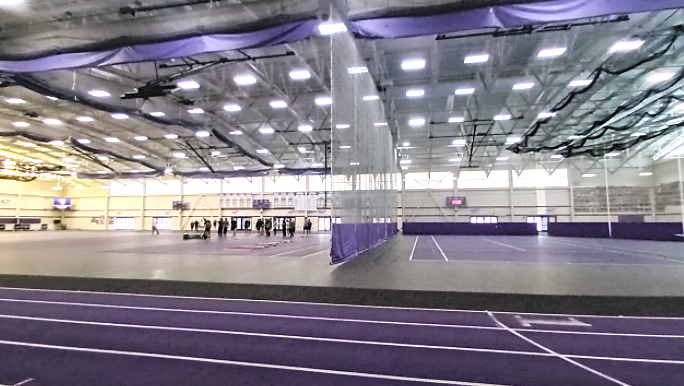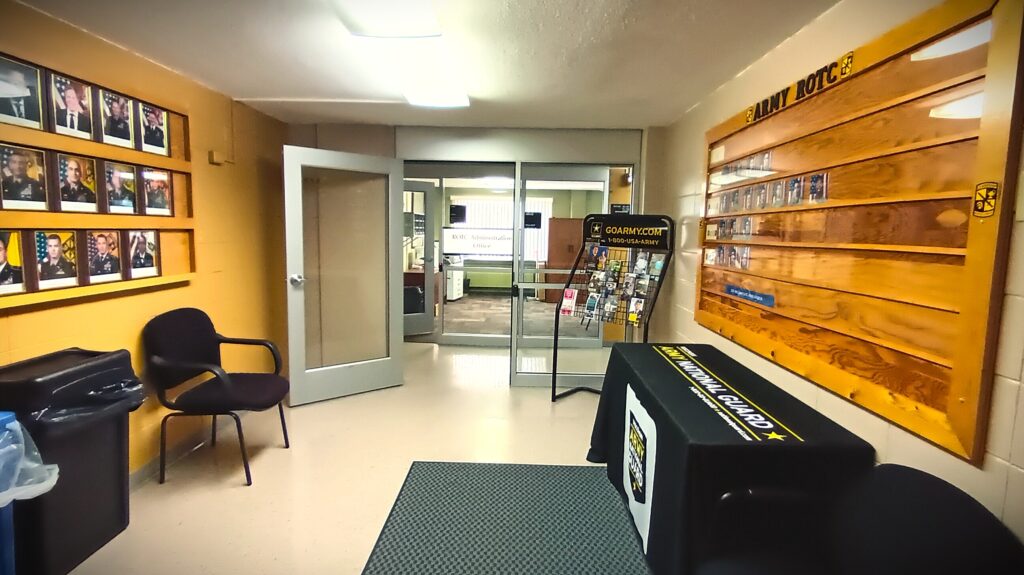Investigative Project
December 1st, 2025UWW Shares Facility with ROTC
For several weeks, ROTC cadets and non-military students have been sharing the gym and track areas during overlapping time slots, creating confusion and frustration for many who have Physical Education or Athletic classes at the Williams Center early in the day. The ROTC’s presence in the space is not new or unexpected; their training schedule is approved at the start of the academic year.
“The ROTC program schedules that area with the gym,” explained Sergeant Matthew Sullivan, who oversees military-conditioning courses at UWW. “It allows students who aren’t even interested in ROTC to take it, one, to experience how the military does PT, and two, to get PE credit.”
However, this semester has brought unusually high enrollment, and the Williams Center is showing signs of strain. With more people than ever trying to use the same limited areas, coordination has slipped. “It’s getting pretty busy in there,” Sullivan noted, suggesting the concern needed to be raised with Williams Center staff.
Students, who preferred to remain anonymous, reported that the crowding feels more than just inconvenient. Many expressed frustration that, as paying students, they were never informed about why their class experience had changed dramatically. It felt as if all the instructors themselves lacked the information needed to share.
Scheduling Issues and Signs of Tension
Observations over September and October (2025) revealed growing, subtle tension among instructional staff using the gym and track during early-morning hours. Nothing escalated into formal conflict, but there were repeated moments of discomfort. One instructor in particular from the sports department appeared consistently frustrated by unexpected overlaps and declined to participate in a formal interview.
Students noticed patterns immediately. They expressed disappointment that the administration had not communicated any information related to how campus overpopulation affected class settings, nor how the reservation system worked behind the scenes, any information would have been better than being ignorant; after all this is a university.
During the interview with Coach Corey Meredith, who has been working only two months by the time of the interview, made it clear that some staff had not been informed that the space functioned as a classroom or that there were many classes going on in the mornings, in the same area at the same time period. When asked about the reservation system and whether he knew what classes were scheduled in the same area, he explained:
“I’m not aware. What I’ve understood is we kind of use the facility. I think athletics maybe takes precedence over it, like in season athletics, and then out of season athletics, obviously, if there’s a class, we work around that, or if there’s an event, we work around that. But that’s what I’ve understood it since I’ve been here.”
His comment reinforced the central issue: instructors were doing their jobs but lacked clear information about shared facility scheduling and space.
Causes Behind the Facility Overlap
Although ROTC’s reservations were properly documented, confusion surfaced among non-ROTC instructors who either were not familiar with the reservation process or did not know which department to contact. Without clear communication channels, instructors ended up reacting in real time instead of planning ahead. Campus overpopulation amplified the situation, highlighting that these issues stemmed from logistical strain, not personal conflict.
Impact on the Instructional Environment
Nobody is acting with ill intention; everyone is just trying to teach or train, and students are trying to learn, but the lack of a unified communication protocol has created unnecessary stress. Students notice the tension, and classes feel more chaotic than they should. Multiple instructors teaching at once raise noise levels, split attention, can make it difficult to follow instructions. When the environment is overcrowded, even the most cooperative staff members cannot fully manage their teaching conditions.
Findings and Outcome
After speaking with instructors and observing several sessions, it was clear a big part of the confusion was simply not knowing the right details. Many instructors from different programs were unaware of how the reservation system worked, that existed or who to contact. The overcrowded campus only added stress to the problem and became more noticeable. The root cause, in the end, was not conflict between individuals or favoritism toward any group. It was a shortage of space combined with inconsistent communication.
Ideally, the long-term solution would be additional space, a new gym, and track, but that is not feasible at the moment. For now, the hope is that with clearer scheduling, open communication, and a shared understanding that everyone is navigating the same overcrowded environment, the Williams Center can become a more coordinated and harmonious space for all who rely on it.
This report helped bring everyone together on the same page. Since the interviews, staff posted signs, instructors have begun using other rooms in the Williams Center for classes, also staff and instructors have increased communication with one another. Whether these improvements will last remains to be seen, but at least now there is acknowledgment that the issue exists. The result has been a smoother flow during early-morning hours for instructors and students, and a more respectful sharing of the space under the circumstances.



